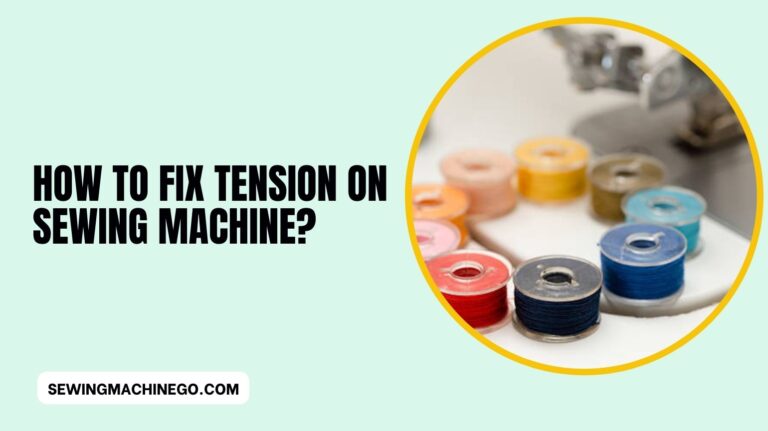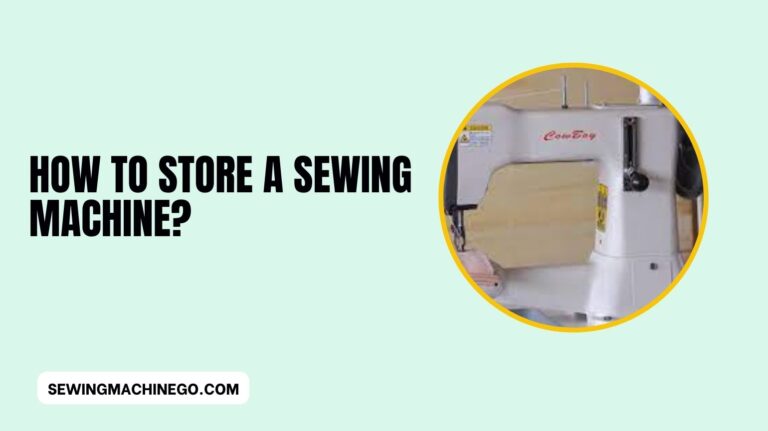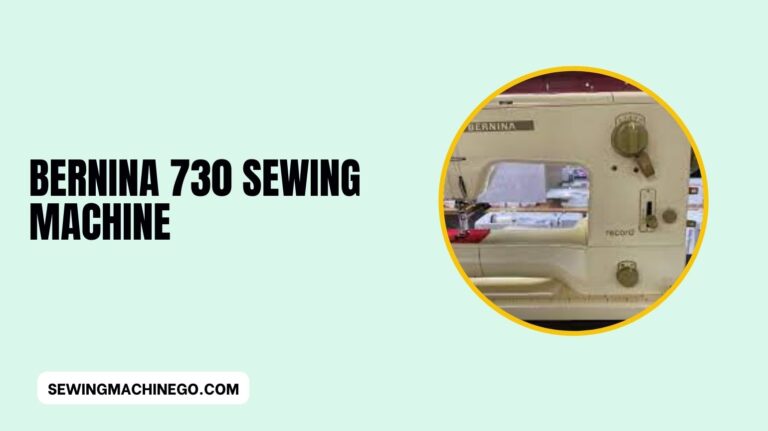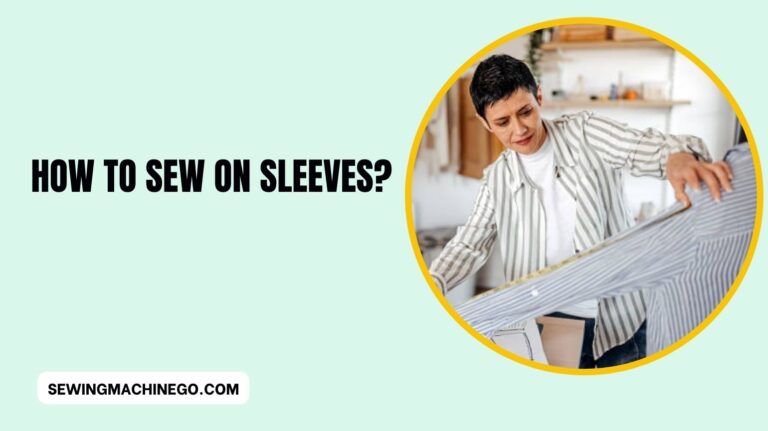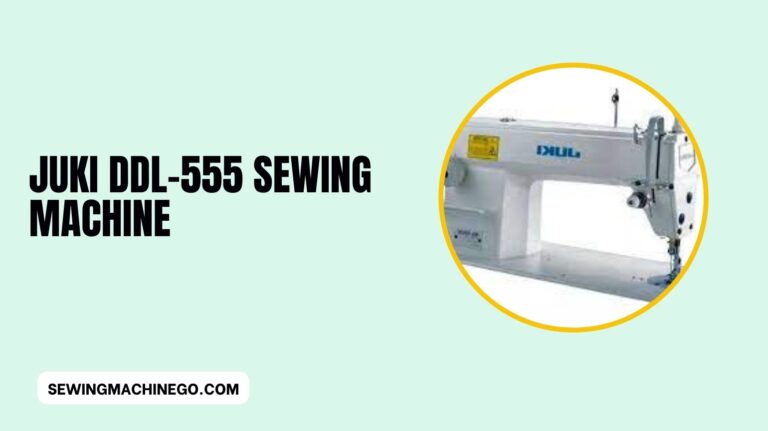5 Best Sewing Machine Overlock Reviews In 2024 – Buyer Guide
In the world of sewing, the use of an overlock sewing machine has become increasingly popular due to its ability to create clean and professional finishes on fabric edges.
Whether you’re a seasoned seamstress or a novice, understanding the nuances of a sewing machine overlock can greatly enhance your sewing projects.
In this article, we will dive deep into the world of overlock stitches and machines, covering everything from their functions and features to maintenance tips and creative possibilities.
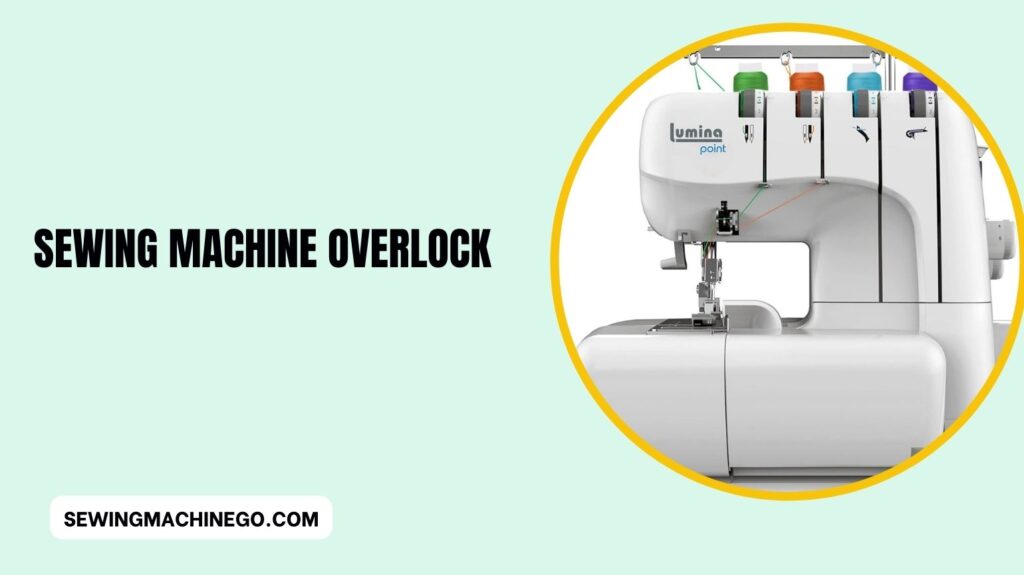
Top 5 Sewing Machine Overlock Picks
Top 5 Sewing Machines for Overlock Review:
Brother Serger, 1034D, Heavy-Duty Metal Frame Overlock Machine
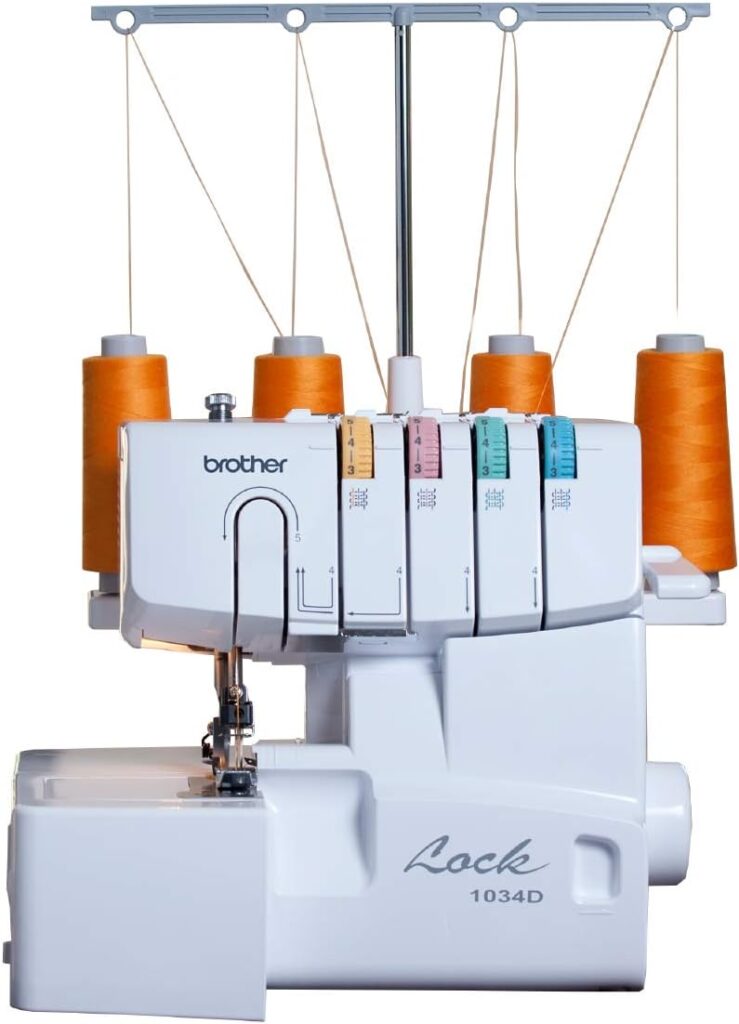
The Brother Serger 1034D is a heavy-duty overlock machine with a robust metal frame. This serger is designed for those who need a reliable and durable tool for professional-level serging and edging tasks.
Its sturdy construction ensures stability during operation, allowing for precise and neat stitches. With easy threading and user-friendly features, it’s a great choice for sewers of all skill levels seeking a dependable overlock machine.
Here are some key features and details about the Brother 1034D:
- Functionality: This serger is designed to handle various types of fabrics, including knits, linens, cotton, and more. It can perform overlock stitches, creating seams that prevent fraying while providing a neat finish.
- Thread Capability: The Brother 1034D can use 3 or 4 threads, allowing for a range of stitch options. Users can create narrow, rolled hems, decorative edges, and secure seams.
- Differential Feed: It has a differential feed system, enabling the machine to manage different fabric layers smoothly, preventing stretching or puckering.
- Adjustability: The machine features adjustable stitch width, stitch length, and differential feed settings, providing versatility in achieving different stitch styles and sizes.
- Speed: It operates at a high speed, which helps in completing projects quickly and efficiently.
- Accessories: The machine typically comes with multiple accessories such as a range of presser feet, thread nets, thread spool caps, a soft cover, tweezers, a cleaning brush, a hexagonal driver, and more.
- Heavy-Duty Frame: The machine has a sturdy metal frame, providing durability and stability during use.
When using the Brother 1034D or any serger, it’s essential to familiarize yourself with the user manual and conduct regular maintenance to ensure optimal performance and longevity of the machine.
Pros
- Versatility: It can handle a variety of fabrics and stitching styles, making it suitable for different projects.
- Ease of Use: Its threading system and setup are relatively straightforward, especially for a serger, which can be intricate.
- Speed and Efficiency: It works quickly, providing efficient stitching and finishing edges rapidly.
- Durable Build: The heavy-duty metal frame enhances its durability, ensuring a longer lifespan.
- Adjustability: Users can adjust tensions, stitch width, and differential feed for customized stitching.
- Affordability: Compared to many other sergers with similar features, it tends to be reasonably priced.
Cons
- Learning Curve: While it’s relatively user-friendly, using a serger can be complex for beginners, requiring a learning curve to master.
- Threading Challenges: Threading multiple threads can be daunting and time-consuming until one gets accustomed to the process.
Lumina Point Serger Sewing Machine, Metal Frame, Seam Guide for Sergers & Overlock Machines
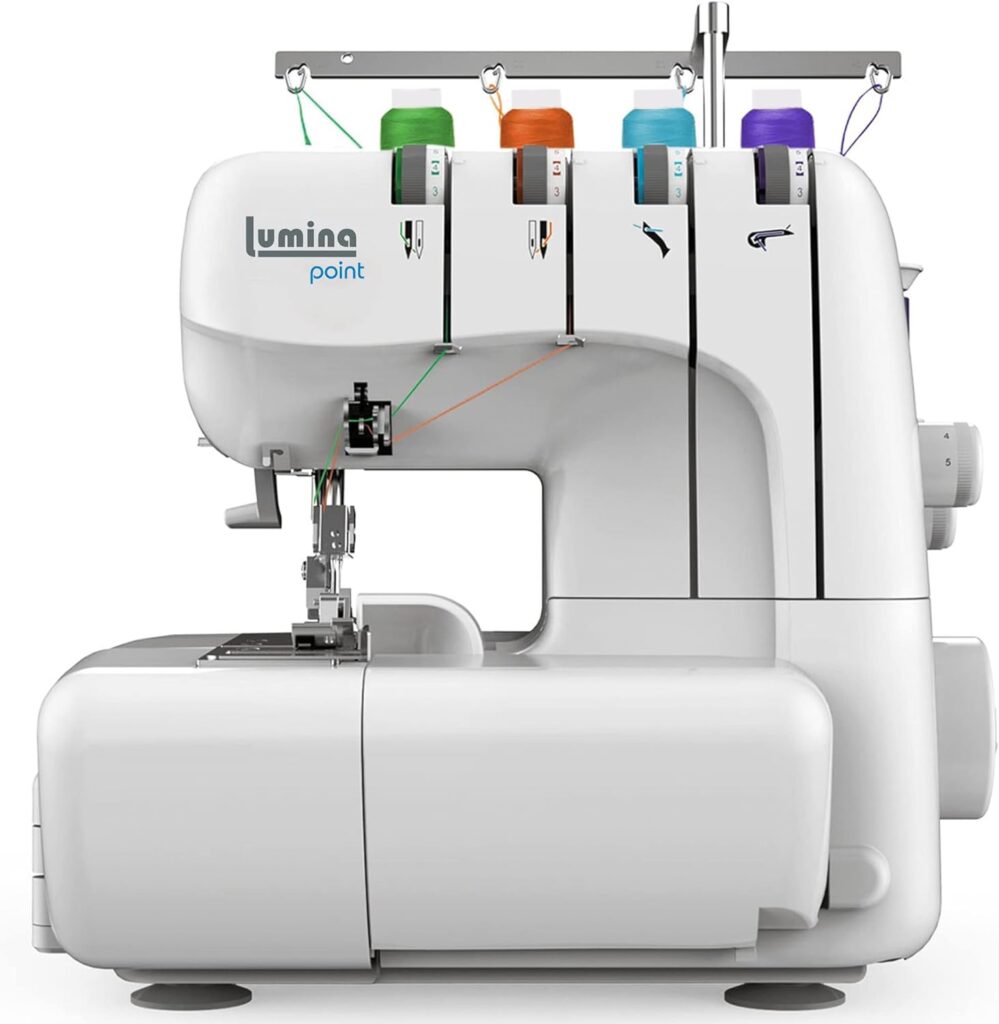
The Lumina Point Serger Sewing Machine features a durable metal frame, ensuring stability during operation.
It also comes equipped with a seam guide, making it a great choice for those using sergers and overlock machines.
This combination of durability and added precision guidance helps users achieve professional-quality seams and finishes in their sewing projects.
Here’s some general information about sergers with a seam guide and metal frame:
- Metal Frame: A metal frame in a serger or sewing machine typically offers stability and durability, making the machine more robust and capable of handling heavier fabrics or prolonged use.
- Seam Guide: A seam guide on a serger or overlock machine helps users maintain consistent seam allowances or stitch widths while sewing. It assists in achieving straight and even seams or hems.
- Functionality: Sergers are specialized machines that trim, sew, and overcast seams simultaneously, creating professional-looking edges and finishes. They often work with multiple threads to secure the fabric edges and prevent fraying.
- Stitch Options: Sergers commonly offer a variety of stitch options, such as overlock stitches, rolled hems, flatlock stitches, and more. The number of threads used and the stitch settings can be adjusted for different sewing techniques and fabric types.
- Adjustability: Sergers usually have adjustable settings for stitch length, width, and tension. This adjustability allows users to customize their stitches according to specific sewing requirements.
- Accessories: Accessories for sergers often include different presser feet, needles, thread spool caps, tweezers, cleaning brushes, and more to enhance the machine’s capabilities and versatility.
Pros
- Metal Frame: A metal frame typically indicates durability and stability, ensuring a longer lifespan for the machine.
- Seam Guide: Having a built-in seam guide can make it easier for beginners to maintain consistent seam allowances and achieve precise stitching.
- Suitable for Sergers & Overlock Machines: Versatility to work with both sergers and overlock machines could offer a wider range of stitching options and techniques.
- Possibly High Performance: Depending on the specific features and quality, it might offer high-speed stitching or other performance advantages.
- Reliable Brand: If Lumina Point has a reputation for producing quality sewing machines, this could be a significant advantage in terms of reliability and customer support.
Cons
- Cost: Sometimes machines with metal frames and specialized features tend to be more expensive compared to basic models.
- Complexity: If it has numerous features or settings, it might be challenging for beginners to learn or for occasional users to operate efficiently.
Juki 1-Needle, 3-Thread Overlock Machine MO-623
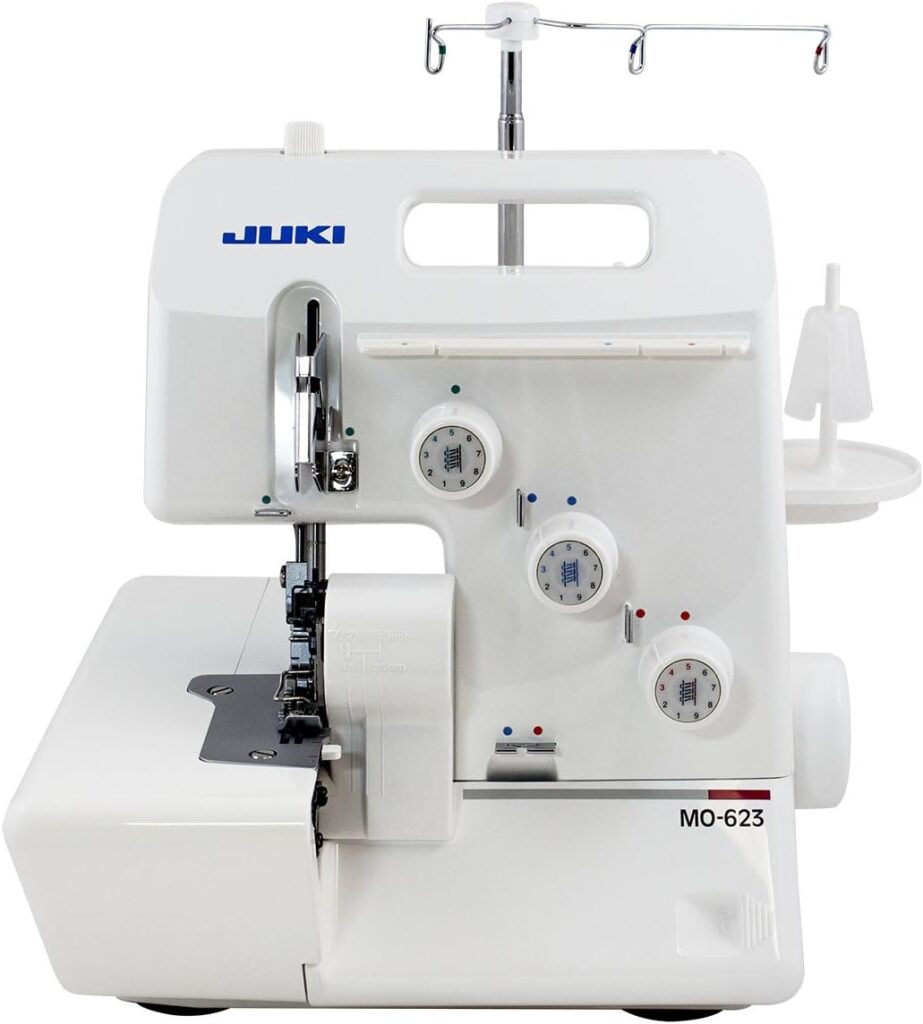
The Juki MO-623 is a 1-needle, 3-thread overlock machine known for its efficiency and simplicity. This compact serger is designed to create neat and secure edges on a wide range of fabrics.
With its user-friendly features and reliable performance, the Juki MO-623 is an excellent choice for seam finishing, hemming, and edging tasks in sewing projects.
Whether you’re a beginner or an experienced sewer, this machine is a valuable addition to your sewing toolkit, offering professional-quality results with ease.
Here are some features and details about the Juki MO-623:
- 3-Thread Overlock: This machine is designed to work with a 3-thread configuration, allowing it to create overlock stitches that encase the fabric edge, preventing fraying and providing a neat, finished look.
- Differential Feed: It comes equipped with a differential feed mechanism, enabling smooth feeding of different fabric types without causing stretching or puckering. This feature is particularly useful when working with stretchy or lightweight fabrics.
- Adjustability: The machine offers adjustable stitch length and cutting width, giving users the flexibility to achieve various stitch styles and sizes based on their project requirements.
- Speed and Performance: The Juki MO-623 is known for its efficient operation and relatively high sewing speed, allowing users to complete projects quickly.
- Ease of Use: It’s designed with user-friendly features, making it suitable for both beginners and experienced sewists. Threading guides and color-coded thread paths simplify the setup and threading process.
- Durability: Juki is known for producing sturdy and durable machines, and the MO-623 is no exception. It is build quality and construction ensure longevity with proper maintenance.
- Accessories: It typically comes with accessories such as multiple presser feet, a thread spool cap, needles, tweezers, a small screwdriver, and more, enhancing its capabilities for different sewing tasks.
- Versatility: While it primarily functions as an overlock machine, it can handle various types of fabrics and perform tasks like seam finishing, edge trimming, and creating decorative edges or rolled hems.
Pros
- Reliability: Juki is known for producing durable and reliable machines, and the MO-623 is no exception. It’s built to last and handle various sewing projects.
- Ease of Use: It’s relatively straightforward to set up and operate, making it suitable for beginners and experienced sewers alike.
- Versatility: This machine offers a good range of stitch options, allowing users to create different finishes and edges on fabrics.
- Speed and Efficiency: The machine operates at a decent speed, enabling users to complete projects efficiently.
- Quality of Stitch: The stitches produced by the MO-623 are generally of high quality, providing neat and professional-looking finishes.
Cons
- Limited Features: Compared to more advanced models, this machine might lack certain advanced features or functions that professionals might desire for intricate projects.
- Thread Tension Control: Some users find it slightly challenging to fine-tune the thread tension for optimal stitching.
SINGER | S0100 Serger Overlock Machine With Included Accessory Kit
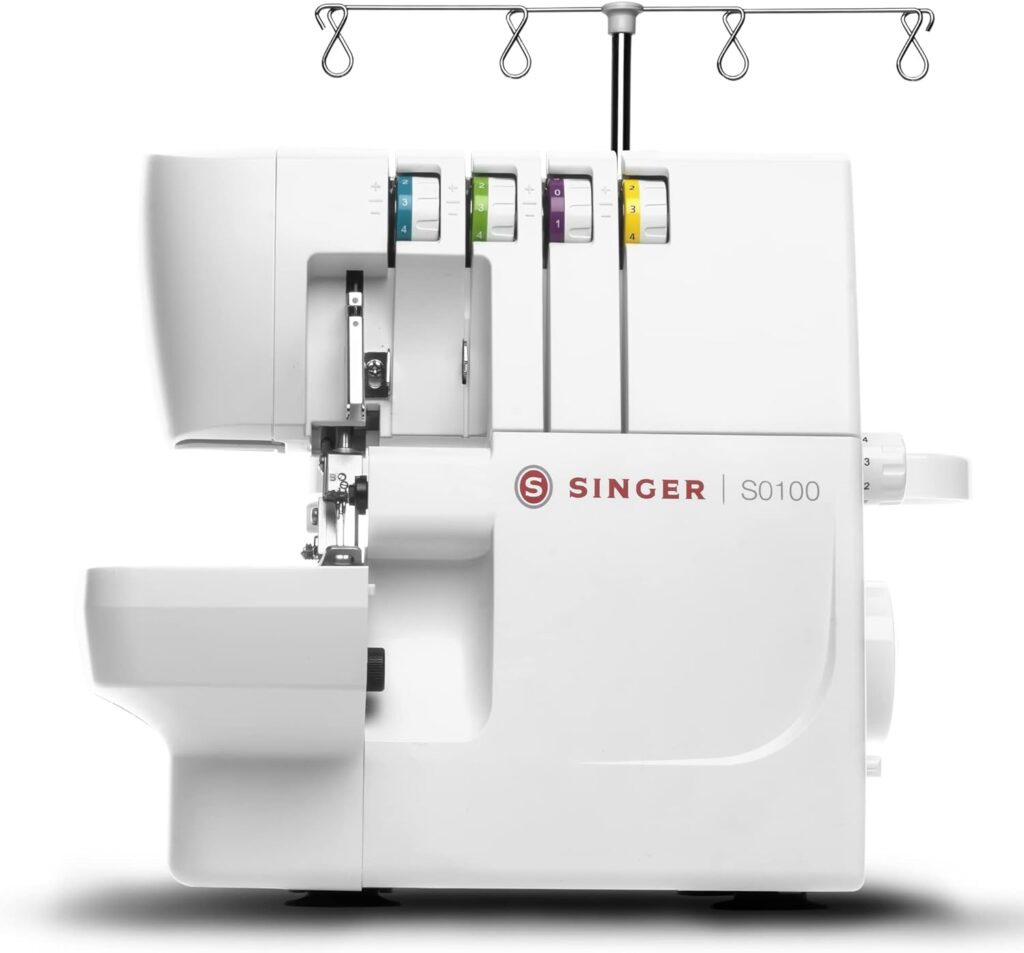
The SINGER S0100 Serger Overlock Machine comes with an included accessory kit, making it a convenient choice for sewers of all levels.
This serger is designed to handle a wide range of overlocking tasks, from hemming and edging to finishing seams.
With the included accessories, you have everything you need to get started on your sewing projects right away, and the SINGER brand’s reputation for quality and reliability ensures that this serger will meet your sewing needs effectively.
Here’s an overview of its features and what the included accessory kit might contain:
- Functionality: The SINGER S0100 Serger is capable of performing various types of stitches, including overlock stitches, rolled hems, and flatlocking. It trims the fabric edge while simultaneously sewing, preventing fraying and providing a clean finish.
- Adjustability: It typically offers adjustable stitch length, width, and differential feed settings. These adjustments allow users to customize their stitches according to the fabric type and desired finish.
- Speed and Performance: SINGER machines are known for their reliability and efficiency. The S0100 likely operates at a decent sewing speed, enabling users to complete projects efficiently.
- Accessory Kit: The included accessory kit can vary, but it often includes essential items such as multiple presser feet (for different stitch styles), needles, thread spool caps, tweezers, screwdrivers, a lint brush, and a soft dust cover for machine protection. Some kits might also include additional specialty feet or attachments for specific sewing techniques.
- Ease of Use: SINGER machines are generally designed with user-friendly features. The S0100 likely includes color-coded threading guides and a detailed instruction manual to assist users in setting up and operating the machine.
- Versatility: This serger is suitable for a range of fabrics, from lightweight to medium-weight materials. It’s suitable for tasks such as garment construction, finishing seams, and creating decorative edges or ruffles.
Pros
- Versatility: It offers a variety of stitch options for different fabrics and finishes, making it versatile for various sewing projects.
- Easy Threading: Known for its color-coded threading system, it is relatively easy and quick to thread.
- Speed: Generally, sergers are faster than conventional sewing machines, helping to speed up the sewing process.
- Cutting and Seaming: The serger trims the fabric edge while sewing, creating a clean, professional-looking edge.
- Included Accessory Kit: Comes with a package of accessories, reducing the need for additional purchases.
Cons
- Learning Curve: Sergers can be more complex than regular sewing machines, so beginners might find it challenging to learn initially.
- Tension Adjustment: Setting the correct tension for different fabrics and stitches can be tricky and might require some practice.
- Maintenance: Sergers need regular maintenance, including oiling and cleaning, to keep them in good working condition.
Lumina Sienna, 3-4 Thread Serger With Adjustable Stitch Length, Heavy-Duty
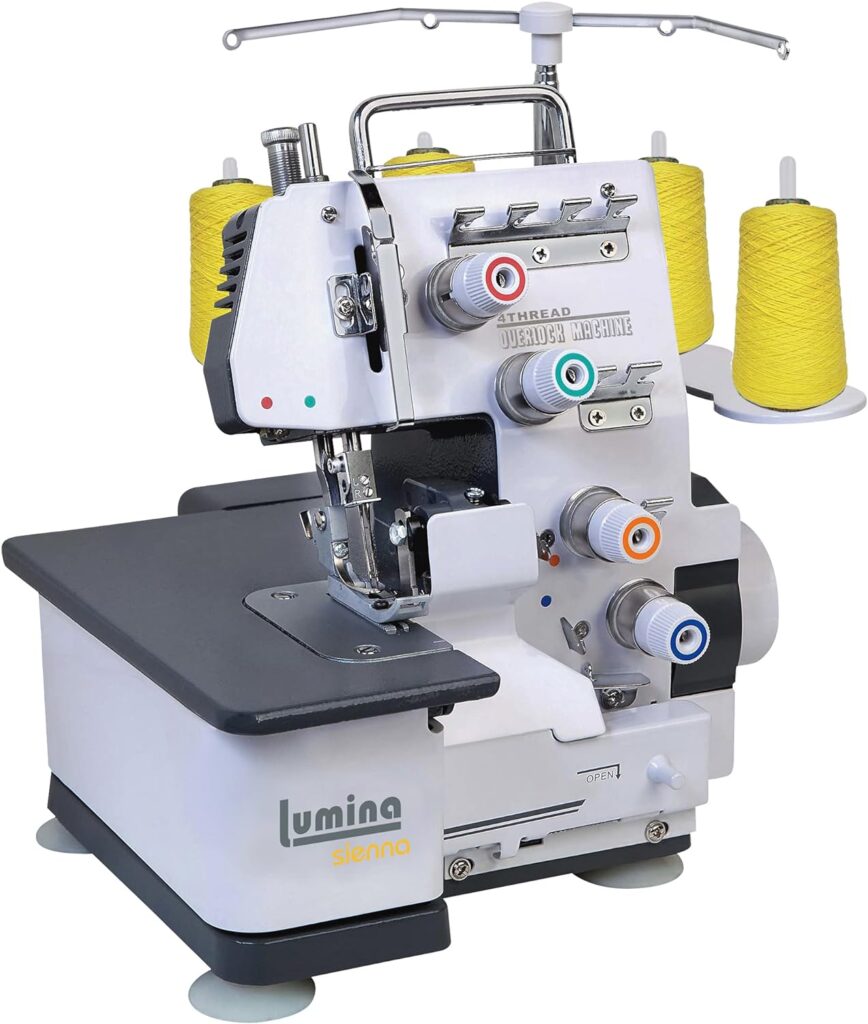
The Lumina Sienna is a heavy-duty 3-4 thread serger with adjustable stitch length, designed to meet the demands of sewing enthusiasts and professionals alike.
With its robust build and adjustable stitch options, it provides exceptional versatility and durability for a wide range of sewing projects.
Whether you’re working on lightweight fabrics or heavy materials, the Lumina Sienna is up to the task, making it an excellent choice for those seeking reliability and performance in a serger.
However, a 3-4 thread serger with adjustable stitch length and heavy-duty capabilities generally offers several functionalities:
- Stitch Configurations: A 3-4 thread serger typically offers versatility in stitch options. It can create a variety of stitches such as overlock, rolled hems, flatlock, and more, depending on the number of threads used and the machine’s settings.
- Adjustable Stitch Length: Adjustable stitch length allows users to customize the length of their stitches based on the fabric type and the desired finish, ensuring flexibility in achieving different sewing techniques and styles.
- Thread Configuration: A 3-4 thread serger can use three or four threads simultaneously. The 4-thread setup is often used for more secure and durable seams, while the 3-thread configuration is suitable for lightweight or decorative finishes.
- Heavy-Duty Capability: When labeled as heavy-duty, a serger is generally built with sturdier components and is capable of handling thicker fabrics or prolonged use without compromising performance.
- Differential Feed: A differential feed mechanism helps in handling various fabric types by preventing stretching or puckering, ensuring smooth and even stitching.
- Ease of Use: User-friendly features such as color-coded threading paths, detailed instructions, and easy-to-adjust settings contribute to a more convenient and efficient sewing experience.
- Accessories: These may include multiple presser feet for different stitch styles, thread nets, spool caps, needles, tweezers, a cleaning brush, and a soft cover for machine protection.
Pros
- Adjustable Stitch Length: Offers versatility in creating different stitch lengths, allowing for customization based on the fabric and project requirements.
- 3-4 Thread Capability: Versatility in stitching options, accommodating both basic and more intricate stitch designs.
- Heavy-Duty Build: Suitable for handling thicker fabrics and enduring regular use without wearing out quickly.
- Ease of Use: User-friendly features and controls that make it accessible even for beginners.
- Professional Finishing: Provides a professional touch to the edges of fabric, preventing fraying and enhancing the overall look of finished garments or projects.
Cons
- Price: Depending on the market, sergers with adjustable stitch length and heavy-duty build can be more expensive compared to basic models.
- Learning Curve: Despite being user-friendly, mastering the different settings and stitches might take time and practice, especially for those new to serging.
What Is an Overlock Stitch?
An overlock stitch is a type of stitch produced by an overlock sewing machine that simultaneously trims the fabric edge and encases it with thread, preventing fraying.
This stitch is also known as a serger stitch and is commonly used in the creation of seams and hems.
Overlock stitches are known for their durability and neat appearance, making them a valuable addition to any sewing project.
Types of Sewing Machines with Overlock Capabilities
Overlock sewing machines come in various types, including basic sergers, advanced sergers, and combination machines.
Basic sergers are perfect for beginners, while advanced sergers offer more features and functionalities.
Combination machines combine overlock capabilities with regular sewing functions, providing versatility. Choosing the right type depends on your specific needs and skill level.
Key Features to Look for in an Overlock Sewing Machine
When considering an overlock sewing machine, it’s essential to understand the key features that will help you make an informed decision and ensure you get the most out of your investment.
Here’s a detailed look at the features to look for:
1. Differential Feed:
- This feature allows you to adjust the feed dogs independently. It’s crucial for handling different types of fabrics, preventing stretching or puckering, and ensuring even seams.
2. Stitch Width and Length Adjustability:
- The ability to adjust both the width and length of your overlock stitches is vital. It provides versatility, allowing you to adapt to various sewing tasks and fabric types.
3. Rolled Hem Capability:
- A rolled hem is a delicate and attractive edge finish. Look for a machine with a built-in rolled hem feature to achieve this look effortlessly.
4. Easy Threading System:
- Threading an overlock machine can be a bit complex, so a user-friendly threading system is a significant advantage, especially for beginners. Look for color-coded threading guides and clear instructions.
5. Number of Threads and Thread Tension Control:
- Overlock machines typically use 3 or 4 threads. Consider your sewing needs when choosing the number of threads. Additionally, having control over thread tension is essential for achieving perfect stitches.
6. Differential Overlock Feed:
- This feature allows you to change the ratio between the front and rear feed dogs. It’s helpful when dealing with challenging fabrics or decorative stitching.
7. Knife System:
- The quality and sharpness of the cutting knife are critical. A reliable knife ensures clean-cutting and prevents fabric jams.
8. Free Arm Capability:
- Some overlock machines come with a free arm, which is useful for sewing cylindrical items like sleeves and pant legs.
9. Accessories and Attachments:
- Look for machines that come with a variety of accessories such as presser feet, needles, and stitch guides. These accessories can expand your machine’s capabilities.
10. Built-In Thread Cutter:
- A built-in thread cutter is a time-saving feature. It allows you to trim excess threads quickly, maintaining a neat workspace.
11. Stitch Selection:
- Having a variety of stitch options is a bonus. While overlock stitches are the primary focus, having other decorative and utility stitches can be advantageous.
12. Motor Power:
- The motor’s power can affect the machine’s speed and ability to handle heavier fabrics. Consider your sewing projects when assessing the motor’s strength.
13. Ease of Maintenance:
- Look for a machine that’s easy to clean and maintain. A machine with a self-lubricating system can save you time and effort.
14. Brand and Warranty:
- Consider reputable brands known for their quality and customer support. Also, check the warranty to ensure your investment is protected.
15. Price Point:
- Overlock machines come in a range of prices. Determine your budget and find a machine that offers the features you need within your price range.
By considering these key features, you can make an informed choice when selecting an overlock sewing machine that suits your specific sewing needs and preferences.
Remember that the right machine can significantly enhance your sewing projects and overall sewing experience.
Using an Overlock Machine
Using an overlock sewing machine may seem intimidating at first, but with the right guidance, it can become a valuable tool in your sewing arsenal.
We’ll provide a step-by-step guide to using the machine, along with tips for beginners to get started confidently.
Common Mistakes to Avoid
To ensure your sewing projects turn out flawlessly, it’s crucial to be aware of common mistakes in overlocking and how to prevent them. Learn from the experiences of others to save time and frustration in your sewing endeavors.
Maintenance and Troubleshooting
Maintenance:
Proper maintenance is vital to keep your overlock sewing machine running smoothly. Here’s a brief overview of maintenance tasks:
- Regular Cleaning: Clean your machine after every project or approximately every 10 hours of sewing to remove lint and debris.
- Oil Your Machine: Follow your machine’s manual for oiling instructions. Lubricate the recommended parts to prevent friction and wear.
- Check and Replace Needles: Regularly inspect and replace needles. Dull or bent needles can cause stitching issues.
- Thread Tension: Keep an eye on thread tension and make adjustments when needed to maintain balanced stitches.
- Knife Sharpness: Ensure the cutting knife is sharp and not damaged. Replace it if necessary to avoid fabric jams.
Troubleshooting:
When facing issues with your overlock machine, consider these common troubleshooting steps:
- Uneven Stitches: Adjust the tension of the threads, check for threading errors, and ensure the differential feed is correctly set.
- Thread Breakage: Re-thread the machine carefully, use high-quality threads, and check for any obstructions in the thread path.
- Fabric Jams: Ensure the knife is sharp, and the fabric is properly aligned. Slow down the machine if needed to prevent jams.
- Skipped Stitches: This can be due to needle issues. Check the needle for damage and replace it if necessary.
- Stitch Length Irregularities: Adjust the stitch length to your desired setting and ensure the differential feed is properly adjusted.
- Motor Issues: If the motor is making unusual sounds or not running smoothly, consult your machine’s manual or contact customer support.
By following these maintenance and troubleshooting tips, you can keep your overlock sewing machine in top working condition and resolve common issues efficiently.
Advantages of Using an Overlock Sewing Machine
Discover the benefits of using an overlock sewing machine over a traditional sewing machine. From saving time on finishing edges to enhancing the overall quality of your sewing, an overlock machine can be a game-changer.
Creative Possibilities with Overlock Stitches
Overlock stitches are not just for seams; they can be used creatively to add decorative elements to your projects. Explore the various applications of overlock stitches and unlock your creativity.
Overlocking vs. Serging: Is There a Difference?
While the terms “overlocking” and “serging” are often used interchangeably, there are subtle differences between the two. We’ll explain the distinction and when to use each technique for the best results.
Overlock Accessories and Attachments
To make the most of your overlock machine, it’s essential to know about the various accessories and attachments available. These tools can help you achieve specific sewing tasks with ease.
Overlock Machine Brands to Consider
A variety of brands offer overlock sewing machines. We’ll review some of the top brands and compare their models to help you find the perfect machine for your needs.
Reviews and Recommendations
Read real user experiences and recommendations from fellow sewers who have used overlock sewing machines. Their insights can help you make an informed decision when choosing your machine.
Tips for Maintaining an Overlock Machine
Maintaining your overlock sewing machine is crucial for ensuring its longevity and optimal performance. Here are some essential tips to keep your machine in top shape:
1. Regular Cleaning:
- After every sewing session or approximately every 10 hours of use, clean your machine. Remove lint, dust, and fabric debris from the machine’s exterior and interior. Use a small brush, compressed air, or a lint roller to reach tight spaces.
2. Oiling:
- Follow the manufacturer’s guidelines for oiling your machine. Proper lubrication reduces friction, extends the machine’s life, and keeps it running smoothly. Typically, apply a drop of oil to designated points as recommended in the user manual.
3. Needle Care:
- Check and replace needles regularly. Dull or bent needles can cause skipped stitches and other issues. Use the appropriate type and size of needles for your sewing projects.
4. Thread Tension Adjustment:
- Keep an eye on thread tension. If you notice unbalanced stitches or thread breakage, adjust the tension dials as needed. Consult your machine’s manual for guidance on proper tension settings.
5. Knife Maintenance:
- Ensure the cutting knife is sharp and free from nicks or damage. Replace it when necessary to prevent fabric jams and ensure clean cutting of fabric edges.
6. Threading Review:
- Re-thread your machine when you encounter stitching problems. Ensure the threads are correctly and securely threaded through all guides and tension disks.
7. Differential Feed Adjustment:
- The differential feed controls the stretching or gathering of fabric. Adjust it according to your fabric type and project needs to prevent uneven seams.
8. Stitch Length and Width Control:
- Learn how to adjust the stitch length and width. Different fabrics and sewing tasks may require changes in these settings for the best results.
9. Maintain a Clean Work Area:
- Keep your sewing area clean and organized. Avoid spilling liquids or dropping foreign objects into the machine. A tidy workspace promotes safety and extends the life of your machine.
10. Use Quality Thread and Needles:
- Invest in high-quality threads and needles. Inferior materials can cause threading issues, thread breakage, and damage to your machine.
11. Unplug When Not in Use:
- When you’re done sewing, unplug the machine or switch it off. This prevents accidental starts and ensures safety.
12. Periodic Professional Servicing:
- Consider taking your machine for professional servicing at regular intervals, especially if you use it frequently. Professionals can address more complex maintenance needs and make sure your machine is in top condition.
13. Store Properly:
- If you plan to store your machine for an extended period, cover it to protect it from dust. Store it in a cool, dry place, and if possible, in its original case or a dust cover.
People also ask
Can a sewing machine do overlocking?
Yes, a sewing machine can perform overlocking to some extent, but it’s not as efficient or specialized as a dedicated overlock sewing machine (serger).
Sewing machines can create basic overlock-like stitches, but they lack the features and capabilities of a serger,
such as trimming fabric edges while stitching, differential feed, and the ability to handle multiple threads simultaneously. For professional and specialized overlocking, a serger is the preferred choice.
What is overlock in sewing?
In sewing, overlock refers to a type of stitch produced by an overlock sewing machine (serger).
This stitch simultaneously trims the fabric edge and encases it with thread, preventing fraying.
Overlock stitches are known for their durability and neat appearance, making them essential for creating clean and professional finishes on fabric edges, seams, and hems.
What is the difference between a serger and an overlock?
In sewing, “serger” and “overlock” are often used interchangeably to describe the same type of machine.
Both terms refer to sewing machines that create overlock stitches, which trim fabric edges and encase them with thread to prevent fraying.
The distinction is more in terminology; “serger” is commonly used in the United States, while “overlocker” or “overlock machine” is preferred in the United Kingdom and some other regions.
Essentially, they refer to the same type of sewing machine with the same capabilities.
Why use an overlocker instead of a sewing machine?
Overlockers (sergers) are preferred over regular sewing machines for specific tasks such as finishing fabric edges, creating clean and durable seams, and adding decorative stitching.
They excel at preventing fraying, providing a professional look, and handling stretchy or knit fabrics.
While sewing machines are versatile, overlockers are specialized for these tasks, making them a valuable addition to a sewer’s toolkit.
Conclusion
In conclusion, an overlock sewing machine can elevate your sewing projects to a professional level.
From creating clean and durable seams to adding decorative touches, the possibilities are endless with overlock stitches.
Whether you’re a beginner or an experienced seamstress, investing in an overlock machine is a decision you won’t regret.

Hi, I am Alice, and I am your perfect guide to the world of sewing machines. With over 10 years of experience in the sewing industry, I am passionate about sharing my knowledge and expertise to help you make the most of your sewing journey. about me

